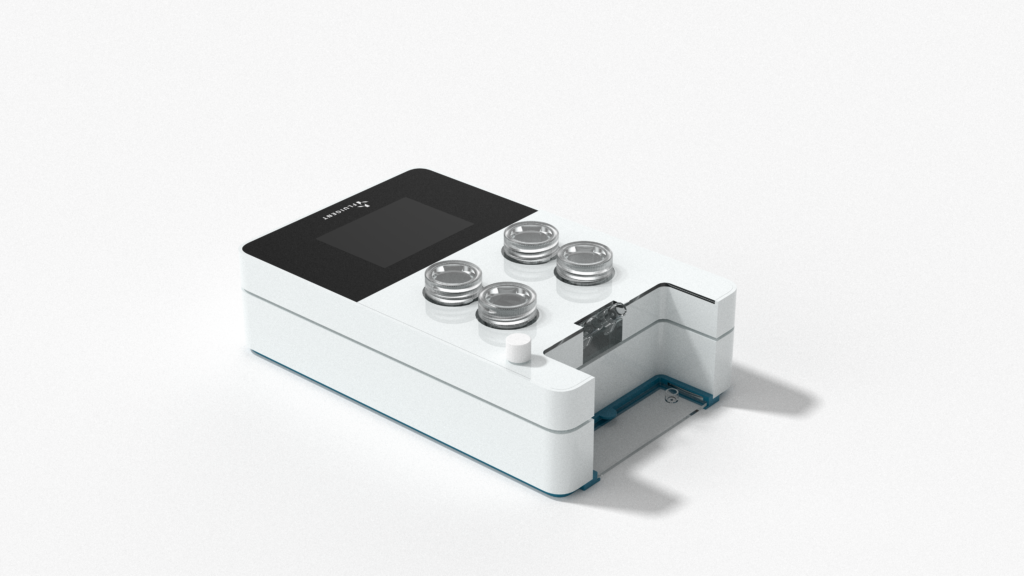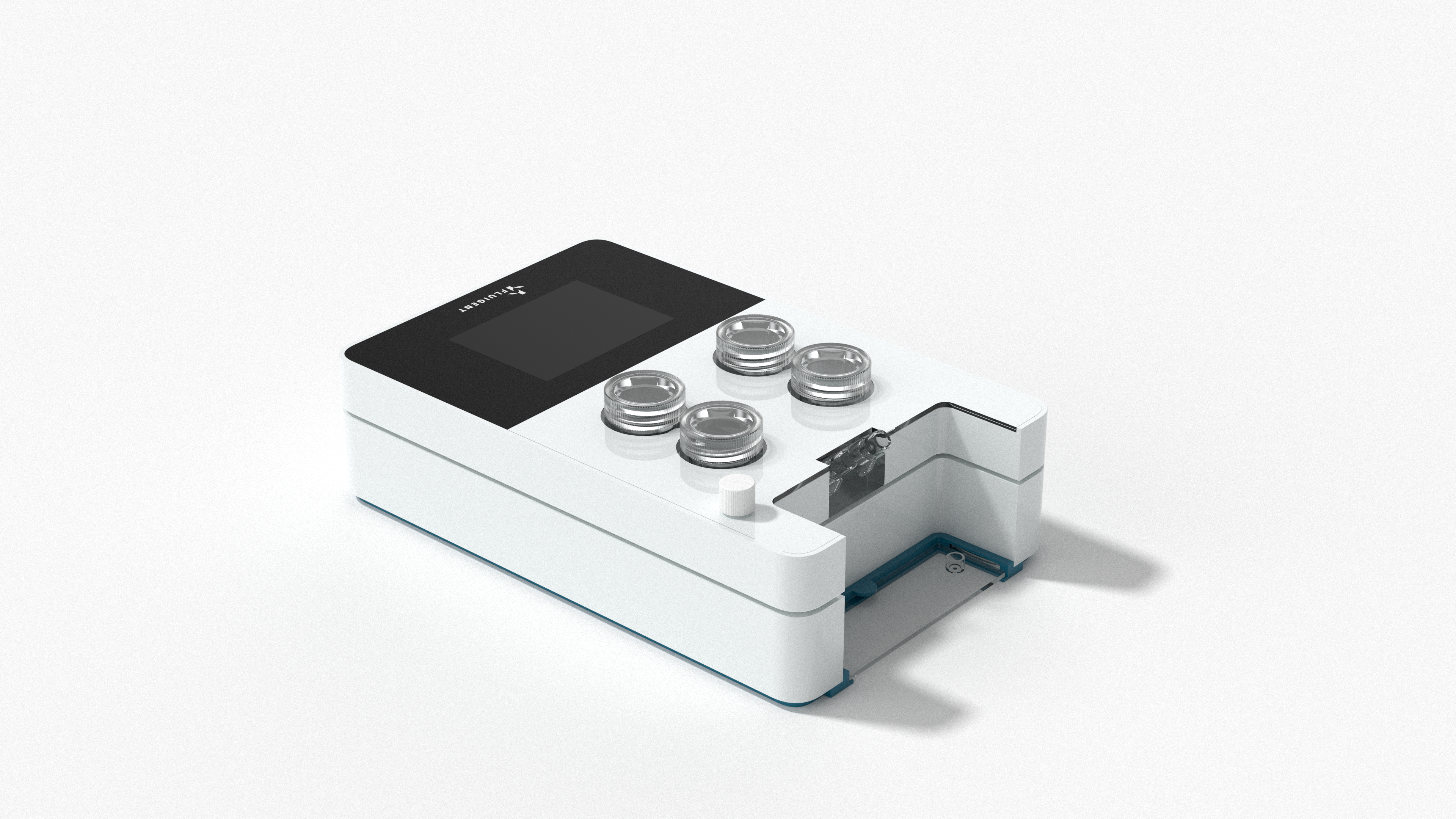Fluigent, leader in microfluidics, unveils OMI, the world’s tiniest lab. OMI mimics living organs such asskin, lungs, or even the brain. Smaller than a shoebox, it emulates biology through organ-on-chip to predict the human response. Portable and connected, the in vitro models that are enabled by OMI provide significant advances in the understanding of aging, in the ability to personalize treatments in record time, in developing drugs, and in studying infectious disease. Experiments are simplified, automated and more reliable – whilst drastically reducing experiments on animals. Welcome into the inner workings of human biology.
This is one of the unpleasant truths about clinical studies: even after the most careful preclinical studies on rodents, 80% of drugs are not effective on humans. However, a series of such studies can cost millions of dollars, not to mention the human losses as a result of inconsistencies between in vitro and in vivo studies.
Fluigent’s OMI is the first automated human organ modeling platform on a chip for in vitro testing of drugs, toxins and therapy. It enables scientists to develop models of human organs by the culture of cells under conditions close to the physiological environment, which helps evaluate and predict human response depending on the purpose of the study – whether it is used by microfluidics experts, or not! Indeed, it offers automated cell culture, it is portable (for easy analysis under a microscope), and has wireless connectivity.

Now, in vitro models of human organs are portable.
OMI recreates True-to-Life Human Biology. Up to the present day, laboratories for the preclinical drug testing occupy entire rooms. OMI will make it possible to carry out preclinical research, but much faster, cheaper and with higher efficiency. Here are some examples:
- Brain on chip: scientists using OMI can understand what drives neuron function, gene expression or the effects of therapeutics
- Lung on chip: thanks to OMI, researchers can study physiology, disease, and the effect of drug candidates
- Multi-organ connection: scientists can focus on immune response, constructability and conduction and others
How it works
OMI is the first of its kind smallest lab in the world, 15 x 8cm. By reproducing in vitro the in vivo, OMI simplifies and makes microfluidics accessible. Miniaturized and connected through WIFI and iOS/Android app. Working on a battery, it allows to control the experiment remotely via an application and fits any microscope. Data obtained as a result of research is automatically stored on the cloud.
What are microfluidics?
Microfluidics is both the science which studies the behaviour of fluids through micro-channels, and the technology of systems that process or manipulate small (10-6 to 10-12 litres) amounts of fluids using microminiaturized devices containing chambers and channels through which fluids flow or are confined. Microfluidics brings a revolution to the industry comparable to the invention of microprocessors in information processing. Its potential for research and industry is immense, in particular thanks to the chips, in which these fluids flow to, for example, recreate living conditions (organs on chips) or carry out analyzes (DNA, pathogen detection). It decreases the consumption of samples and reagents, reduces the duration of the experiments and reduces the overall costs of the experiments.

